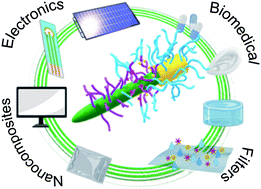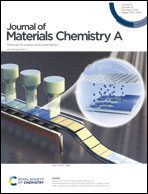Tailored nanocellulose-grafted polymer brush applications
Abstract
Nanocellulose (NC) is the main building block of plants, considered one of the most abundant and sustainable materials with excellent mechanical properties and unique morphology. This nanomaterial serves as a high performance and renewable additive for a range of different applications, including nanocomposites, biomedical technologies, energy storage, and packaging. Due to its high surface area, NC has tendency to aggregate, limiting the ultimate properties of products. Another challenge in using NC is its hydrophilic nature and moisture absorption, which cause issues in being uniformly dispersed in hydrophobic solvents and non-polar matrices. The most promising solution to these challenges is chemical modification, such as introducing polymeric brushes to the surface of NC. This technique has been demonstrated to successfully improve the colloidal suspension stability of NC, to change its hydrophilicity, as well as to introduce different functionalities such as stimuli-responsiveness and carrier ability. Numerous functionalisation approaches are described in the literature implementing various techniques, polymers, and compositions. However, translational approaches to the targeted applications are limited. This review summarises the current procedures described in the literature used to create NC-grafted polymer brushes, their advantages and shortcomings, with a focus on their applications in high value-added materials.



 Please wait while we load your content...
Please wait while we load your content...